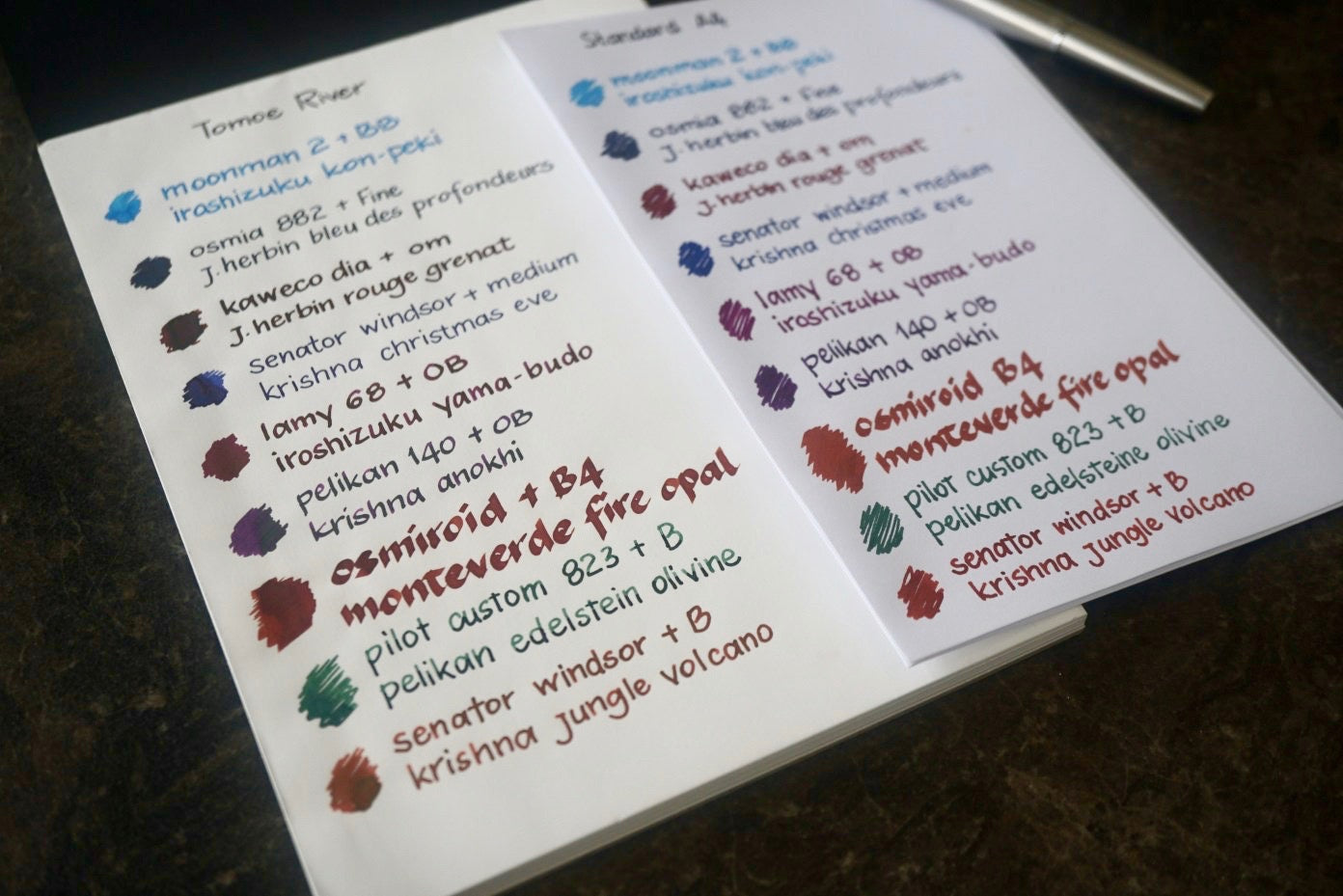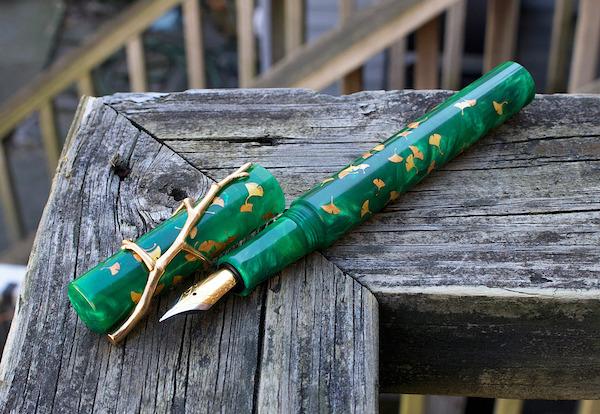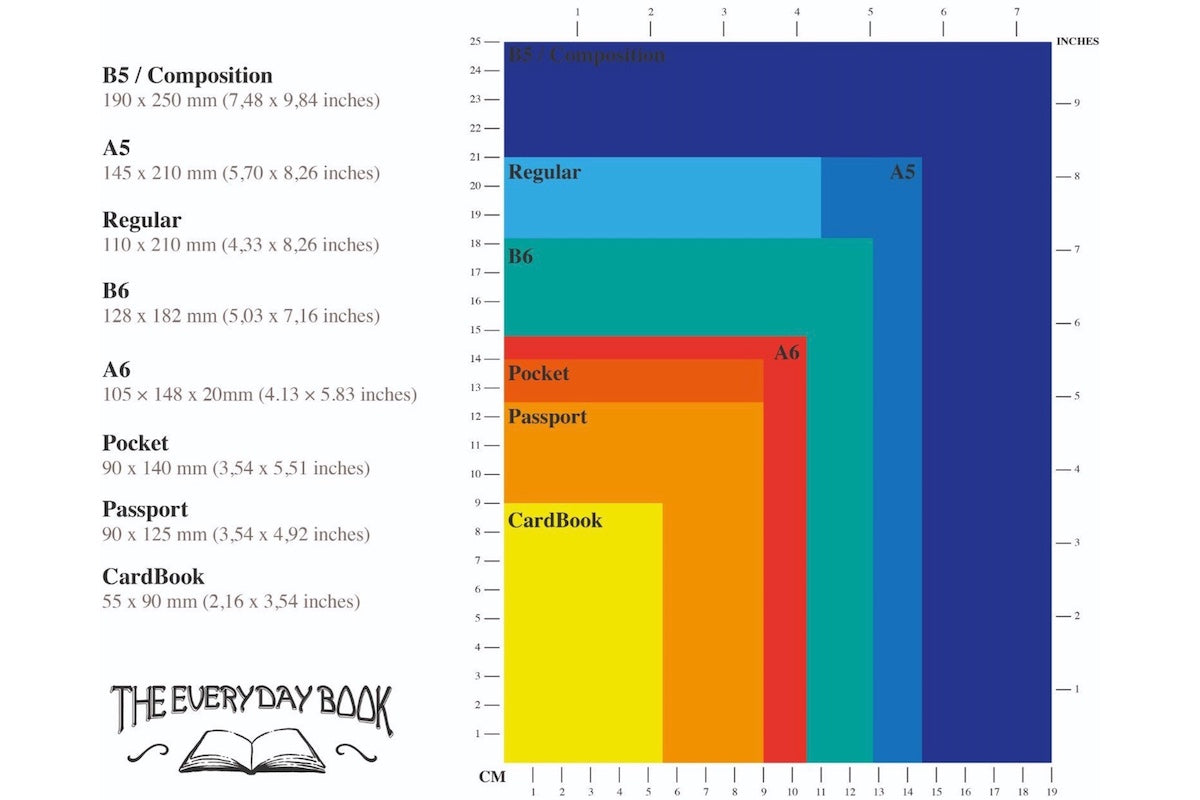Why Tomoe River Paper Is The #1 Fountain Pen Paper

What happened to Tomoe River Paper?
(Update - May 2023)
So much has happened since I put pen to the “Old” Tomoe River paper back in October of 2020 (in the world and with the paper,) that we thought it might be time for an update.
At the time, I was blissfully unaware of what was happening a world away in Japan at Tomoegawa, where machine #7 was about to cease production of Tomoe River paper. It would soon be moved to Shizuoka machine #9, where “New” Tomoe River paper would be made until the end of October 2021. Rumblings in the pen world became louder and louder and the hoarding of the “old” paper commenced. This was followed quickly by the purchasing of large quantities of the “new” TR when it was announced that Tomoegawa would stop production of Tomoe River paper altogether. I will admit that even I caved and wrote a frantic email to Yunus at Galen to set aside two sets of my favorite B5 Everyday Books.
Thankfully, the Sanzen Paper company came to rescue, purchasing not only the remaining inventory of the “New” Tomoe River paper, but also the rights to Tomoe River. Sanzen is part of Japan’s largest paper manufacturing conglomerate, so the future of Tomoe River seemed to be in capable hands for the long run and a sigh was heard in the stationery and pen communities.
As Sanzen was in the midst of the purchase, they were already producing their version of Tomoe River. In fact, their Tomoe River paper is already out in the marketplace. Skeptics and “Old” TR lovers had to assume it would be inferior to the original. Aren’t the new kids on the block almost always?
But this TR diehard might just be a convert. The Sanzen paper is different, but not at all unrecognizable. In fact, it’s just a touch more textured and that seems to be the only discernable difference that I can notice. If I’m being honest, I might even like it a tiny bit more, especially for some of my smoother pens and wetter inks.
Hopefully, the drama of TR has simmered down for the time being or even for good, but should there be more news to report, I’ll meet you back here.
In the meantime, have you tried all three versions of Tomoe River? Do you have a favorite and why? Let us know in the comments. We love hearing what you think!
Tomoe River Paper
The blank page has plagued writers since there have been writers. Even now, as I type this, I am staring at a blank page, albeit on a laptop, rather than my preferred type of blank pages in a notebook or a stack of loose-leaf sheets. As terrifying as the blank page can be, it can also be an invitation to express thoughts and possibilities, ideas and inspiration. As I have become more and more enamored with the art of the analog, I have found myself in search of the perfect paper for a blank leather journal, and for me the answer to that search is Tomoe River paper.

First Impressions
I first experienced this paper in a Hobonichi planner, marveling at the thin paper that withstood a year’s worth of to do lists, plotting and planning. A pencil and rollerball lover first, midway through my first Hobonichi I purchased a fountain pen and as I fell down the rabbit hole of fountain pen collection, I realized that every medium I tried on the Tomoe River paper seemed to offer similar results; magically, I could not see the previous day’s writing and drawings on the next page. Like any good stationery addict, even though I had encountered a paper that worked for me, I still needed to try all of the others. So I’ll use this entry to the blog as a way to share with you some of what I’ve learned about Tomoe River Paper historically and practically.

Observe the surface of the paper by digital microscope under 200 times power. Silky smooth writing paper gives you precise ink strokes & beautiful ink shades.
The History of Tomoe River Paper
In 1914, Tomoegawa Paper Company was founded in Shimizu City, Shizuoka Prefecture, Japan. The company was named for the Tomoegawa River that flowed near the manufacturing site. 105 years later Tomoe River, the paper originally made for catalog mailings, is one of the modern stationery aficionado’s most beloved papers.
Tomoegawa is a very big corporation, with very professional staff and high quality standards. They do not sell direct to any downstream companies that make end-user stationery products. Sakae Technical Paper is the sub company own by Tomoegawa, and distrubiting the Tomoe River paper.
What Makes Tomoe River Paper So Special?

Specially coated on both sides, so ghosting is minimal.
Using pulp made from trees in sustainable forests, the paper is remarkable for many reasons, the first being its thinness. Whether the 52gsm or 68gsm, even hundreds of sheets stitched into notebooks have a very low profile, making them lighter than notebooks with similar page counts. The acronym “gsm” stands for grams per square meter, the higher the number, the heavier the paper. With just a slight increase in gsm, the 68gsm Tomoe River paper is still quite thin. When using the 68gsm version, the user may notice some slight differences in texture and some other distinctions that I will relay later in this article when we discuss the attributes of the paper.
Because Tomoe River paper was originally developed for catalogue mailings, it has enough density and sizing to be resilient to multiple uses. It can be hole-punched for binders, put through a jet printer, folded to make different paper sizes, be written and even painted on.
Tomoegawa manufactures Tomoe River paper in both cream and white for those that have a preference between bright white or a softer cream color when writing.
Tomoegawa, the company that manufactures Tomoe River, makes two kinds of 52 gsm paper. One kind is for offset printing, and comes in many colors. That's not the paper we use. We use the "stationery" paper, which comes only in cream and white, and is specially formulated for handwriting, as opposed to printing press paper.
Featured Tomoe River Notebooks
How To Use Tomoe River Paper

TomoeRiver FP” paper is designed especially for fountain pen users and is the highest quality paper among all TomoeRiver papers and other top papers out there.
Tomoe River Paper is extremely smooth, making it useful for many mediums: pencil, rollerball, gel pen, fountain pen and even light washes of watercolor. While the paper has a capacity for absorbing, some may find that it takes longer to dry depending on the medium they are using. While it can be a very enjoyable surface for wet mediums like fountain pen ink and watercolor paint, it is not generally suggested for alcohol-based paints, markers and inks. When in doubt, it may make sense to have a tester sheet to try mediums that you are worried may perform poorly on the paper.
It’s helpful to know how fountain pen ink and watercolor behave on Tomoe River paper. Fountain pen enthusiasts who favor shading ink, those that create subtle color gradations as ink is laid on the paper, will appreciate how the paper shows off subtle color variations. Sheening inks also perform well as pools of color will sit on the surface of the paper and when dry will create the reflective look so many fountain pen users love. It’s important to be patient and let the paper fully dry to prevent smudging, especially when using sheening or metallic inks.
When using watercolor be prepared for the paper to pucker slightly. Once dry, the paper will relax some, but it will have some remaining crinkle. Some love this new texture, some don’t. You just have to figure out which side you fall on.
The Difference Between 52gsm and 68gsm Papers
I promised to share some differences between the 52gsm and 68gsm. With regards to sheen, the lighter 52gsm paper tends to show off sheen better, meaning color variation and reflection may be more obvious on this weight. 68gsm tends to show bleed through less, especially with wetter mediums and it is more resistant to ghosting, which for many writers is the thing they most dislike about taking paper to pen. Ghosting is the shadow that one sees when using both sides of the paper. With 68gsm, there is less ghosting, though still some, with 52gsm showing more through pages that have been written and drawn on. While bleed through can be a concern, feathering generally isn’t.
How Does Tomoe River Paper Compare To Others?

Superior lightweight Tomoe River FP paper is developed to reduce the thickness of notebooks while remaining strong and resistance to ink bleeding and feathering. Even though it is thin, it is resistant to bleed-through and feathering so it can handle a variety of inks and pen nibs.
Compared to other papers, Tomoe River is distinguished for all of the reasons above. Compared to Rhodia and Clairfontaine papers, Tomoe River has been found to have a longer dry time. Compared to Apica, the results are fairly similar, though the Apica is a thicker paper. CD professional has been noted to be slicker and glossier and less effective with shading inks, MD paper and MD Cotton more absorbent. As with most things paper related, much of the decision to use one paper over the other is a personal preference.
24 people wrote on seven kinds of papers with ten kinds of inks, and evaluated their writing feeling to fill in the answer sheet. During the experiment, names of paper and ink were in private. 
|
A. TomoeRiver FP paper (SAKAE)
|
1. Sailor (Ultra Black) 2. Montblanc (Royal Blue) 3. Platinum (Carbon Black) 4. Private Reserve (Lake Placid Blue) 5. Pilot (Black) 6. Pilot (Asa-gao) 7. Waterman (Black) 8. Pelikan (Royal Blue) 9. Wagner (Red Black) 10. Pelikan (Edelstein Tanzanite) |
Tomoe River Sizes
 The sizes available for Tomoe River are becoming more and more endless as additional manufactures use it to make their notebooks and loose sheets. While typical sizes of A4 and A5 are readily available in loose sheets and pads, notebooks in every size Traveler’s Notebook have also made their way to the market. Many Tomoe River enthusiasts are also making their own notebooks using this paper, so the size possibilities are endless.
The sizes available for Tomoe River are becoming more and more endless as additional manufactures use it to make their notebooks and loose sheets. While typical sizes of A4 and A5 are readily available in loose sheets and pads, notebooks in every size Traveler’s Notebook have also made their way to the market. Many Tomoe River enthusiasts are also making their own notebooks using this paper, so the size possibilities are endless.
Where To Buy Tomoe River Notebooks and Paper?
Where does one find Tomoe River? Since you’ve found your way to Galen Leather Co., you won’t have to travel far. A few clicks and you will happen upon the Everyday Notebooks, currently available in four sizes: A5, Regular, Passport and Pocket. Sold in sets of three in a Galen branded pouch, the notebooks come with grid and line guides and a leather blotter to absorb any extra ink and as a token of the company’s primary material. They also make stunning handmade leather journals using Tomoe River Paper.
Loose sheets and notepads are also readily available at sites like Vanness (vanness1938.com), Goulet (gouletpens.com), Nanami Paper (nanamipaper.com) and Strait’s Pen whose site is currently under construction but who can be reached via email on their site to place orders and who has a wonderful selection of sizes in plain, grid and lined Tomoe River). If you are looking for unique sizes, Etsy has many shops making their own proprietary Tomoe River Notebooks.
And then there is a dream I currently have to go to Kakimori in Tokyo and make my own custom notebook using Tomoe River paper. This place has become legendary in the stationery world for being the place to make your own notebook, choosing the style, covers, size and all of the interior papers.
Until I make a return trip to Japan, I will tell you that the notes I took for this entry are in a Galen Everyday Notebook size A5, which I have been using since the DC Pen Show. It looks as new as the day I started using it and it’s been to three countries and on several work trips. It’s a winner and I’m only saying that because I believe it to be true. I plan to keep using my Everyday Notebooks, well, every day.
Tomoe River and Hobonichi
Many people have seen and learned this paper for the first time in Hobonichi planners, a famous Japanese planner system, in the planner community. That using the TR white paper in 52 gsm.
A few people have asked whether our Tomoe River paper is the same Tomoe River paper that's used in the Hobonichi Techo. The answer is yes. We use the same 52 gsm paper as the Hobonichi. 52 Gsm White Paper.
Update - September 2020
Tomoe river paper has changed.
Here's a good article that compare the old and new Tomoe River paper. In our internal tests we can't see major differences between old and new papers, still fountain pen friendly. Yes feeling is different and need to see more users experiences. The condensed version is this:
- Feathering, Bleed, Ghosting - same
- Tooth - New is toothier
- Saturation - colors appear darker on the new paper
- Line definition - New has "jagged" edges. Old has crisp edges
- Feel - New is "crispier", louder, and surface is harder
Tomoe River Paper Writing Samples


Tomoe River Paper - Copy Paper Comparison




Tomoe River Paper Back Side


Reviews On Youtube
Thanks to @writetomeoften for the images.
---------------------- -------------------------7 Responses
Max
G’day Galen crew and thanks for the May 2023 update Katy-
I was very late to the TRP party- only aware it existed when these teeny tiny notebooks appeared with my galen zippered leather case purchase. Thought I’d made a mistake buying them “for the heck of it”- in watercolour work the thicker the paper the better. But I gave the 52GSM a crack.
Oh wow.
I have those stitched tiny Notebooks still, the larger ones I bought later were gifted to other folks as a single book and I also use the A5 writing paper pad too. I grabbed the different paper (Cosmo?) when I needed another thicker notebook as the original TRP was extinct but it’s still in its Galen slipcase…
An Aussie pen retailer had stock of what I found out from the (Japan based) manufacturer was the “original” paper… not cheap but I dived for the 68GSM Notebooks by Sakae TP that I could find. And I’m loving it. (Have just ordered the last 3 of the 52GSM they had to compare. Sometimes it’s good to be a dinosaur fountain pen writer who lives in the middle of nowhere…)
I may not love some of the ink/pen combos on the 68 but it takes a lot of time to work out what works best for you. (The Iroshizuku Ku-jaku and Take-sumi are frankly awful in my Medium Platinum Century- boring, no sheen! The Take-sumi’s sheen is obvious on regular midori in my Soft Fine Platinum Century so…?)
The build quality of the Sakae notebooks is top notch like the Galen products- the guidesheets Galen supply edge them ahead as Sakae supply nothing but the notebook. I can write with whatever nib size I like and even practice my non English (?) alphabets (Asian, Arabic, Sanskrit etc)!
Sara
Thank you for the update, I am not going to lie, but I had a frantic rush and bought a whole bunch since I thought it was gone for good. This is my favorite and pretty much only paper that I use for calligraphy.
Bmikew
Very helpful, a really great job!
Thank you.
Bmikew
Very helpful, a really great job!
gamesellru
I join. I agree with told all above.
Nichole Bruno
For the writing samples, which pen did you use for that? I love the look, is it a stub nib fountain pen? Thanks so much, I must try that notebook, and hopefully the pen u used too!!
Justin
Paper becomes sexy when it’s Tomoe River. Ever since I started using 52gsm I’ve loved it. Even when compared to a high-quality Rhodia paper, nothing performs as well as TR with a fountain pen. I’ve never used the heavier GSM, so I’m sure there’s definitely some ghosting forgiveness, but I was honestly shocked when I saw how little ghosting there was from the 52. The stuff is almost tissue paper-thin yet no matter what nib size I am using the opposite side of the paper is never polluted to the point that it couldn’t be written on (I hardly notice any ghosting, to be honest).
I purchased my first set of Galen Everyday A5 pads from Goulet Pen and immediately purchased a 2nd. Talk about a product done right. Between the bag, the included templates, the paper on the pads themselves and the stitching, I have no reason to consider anything else. Very well done.
Leave a comment
Comments will be approved before showing up.
Also in Blog

Fountain Pen Abbreviations

62 Of The Best Custom Pen Makers From Around The World




Katy Klassman
Author
Katy worked in a stationery shop for nearly a decade, so She’s educated on many products and stationery client questions. She is also stationery - planner - fountain pen fanatic.